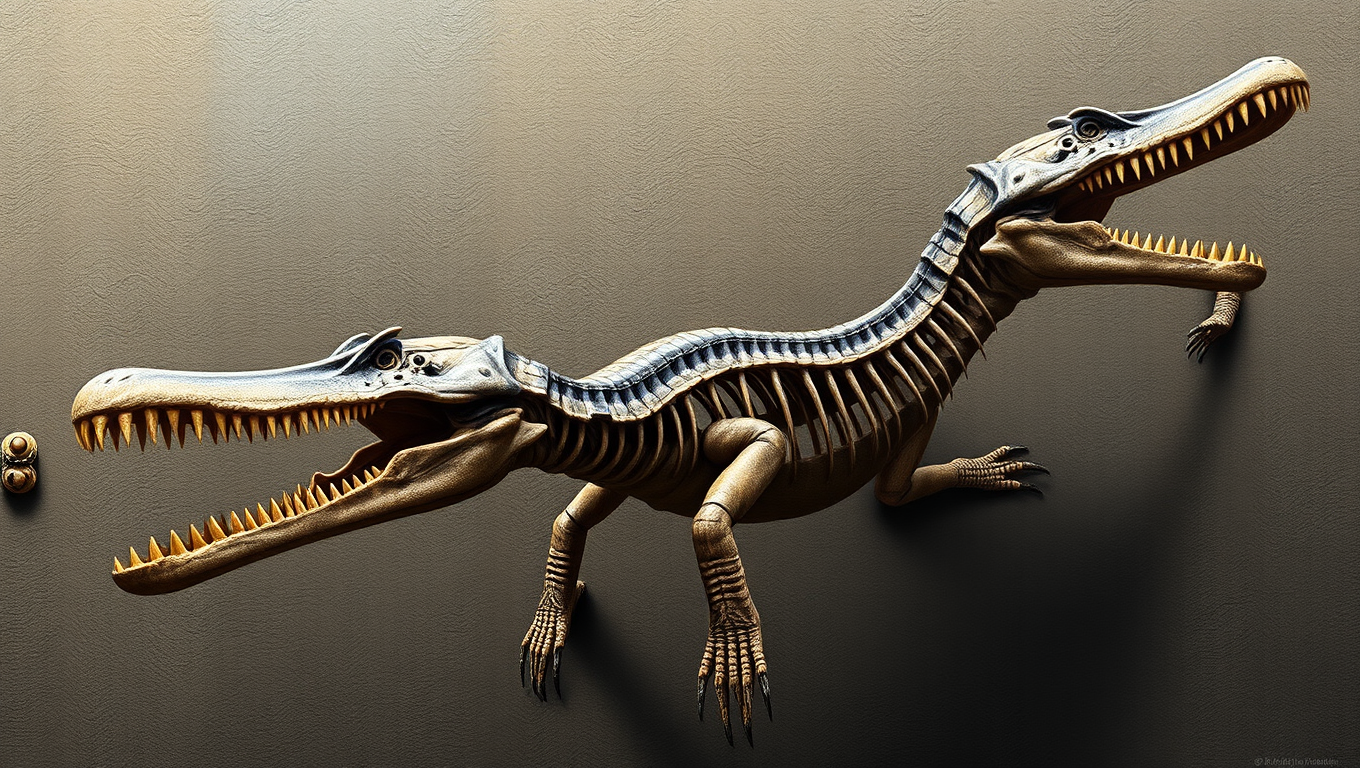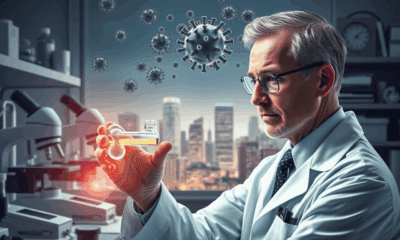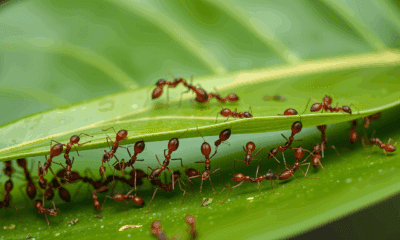While we try to keep things accurate, this content is part of an ongoing experiment and may not always be reliable.
Please double-check important details — we’re not responsible for how the information is used.
Ancient DNA
Mystery of ‘Very Odd’ Elasmosaur Finally Solved: Fiercely Predatory Marine Reptile is New Species
A group of fossils of elasmosaurs — some of the most famous in North America — have just been formally identified as belonging to a ‘very odd’ new genus of the sea monster, unlike any previously known. This primitive 85-million-year-old, 12 meter-long, fiercely predatory marine reptile is unlike any elasmosaur known to-date and hunted its prey from above.

Ancient DNA
Unveiling a New Ancient Sea Monster: Plesionectes longicollum Revealed in 47-Year-Old Fossil
A new long-necked marine reptile, Plesionectes longicollum, has been identified from a decades-old fossil found in Germany’s Posidonia Shale. The remarkably preserved specimen rewrites part of the Jurassic marine story, revealing unexpected diversity during a time of oceanic chaos. It is now the oldest known plesiosaur from Holzmaden.
Ancient DNA
Rewriting a 400-million-year-old fish’s tale: Uncovering new insights into vertebrate evolution.
A fish thought to be evolution’s time capsule just surprised scientists. A detailed dissection of the coelacanth — a 400-million-year-old species often called a “living fossil” — revealed that key muscles believed to be part of early vertebrate evolution were actually misidentified ligaments. This means foundational assumptions about how vertebrates, including humans, evolved to eat and breathe may need to be rewritten. The discovery corrects decades of anatomical errors, reshapes the story of skull evolution, and brings unexpected insights into our own distant origins.
Ancient DNA
Unveiling the Dinosaur’s Menu: A Fossilized Time Capsule Reveals the Sauropod’s Diet 100 Million Years Ago
A prehistoric digestive time capsule has been unearthed in Australia: plant fossils found inside a sauropod dinosaur offer the first definitive glimpse into what these giant creatures actually ate. The remarkably preserved gut contents reveal that sauropods were massive, indiscriminate plant-eaters who swallowed leaves, conifer shoots, and even flowering plants without chewing relying on their gut microbes to break it all down.
-

 Detectors8 months ago
Detectors8 months agoA New Horizon for Vision: How Gold Nanoparticles May Restore People’s Sight
-

 Earth & Climate9 months ago
Earth & Climate9 months agoRetiring Abroad Can Be Lonely Business
-

 Cancer9 months ago
Cancer9 months agoRevolutionizing Quantum Communication: Direct Connections Between Multiple Processors
-

 Albert Einstein9 months ago
Albert Einstein9 months agoHarnessing Water Waves: A Breakthrough in Controlling Floating Objects
-

 Earth & Climate9 months ago
Earth & Climate9 months agoHousehold Electricity Three Times More Expensive Than Upcoming ‘Eco-Friendly’ Aviation E-Fuels, Study Reveals
-

 Diseases and Conditions9 months ago
Diseases and Conditions9 months agoReducing Falls Among Elderly Women with Polypharmacy through Exercise Intervention
-

 Chemistry8 months ago
Chemistry8 months ago“Unveiling Hidden Patterns: A New Twist on Interference Phenomena”
-

 Agriculture and Food9 months ago
Agriculture and Food9 months ago“A Sustainable Solution: Researchers Create Hybrid Cheese with 25% Pea Protein”





























